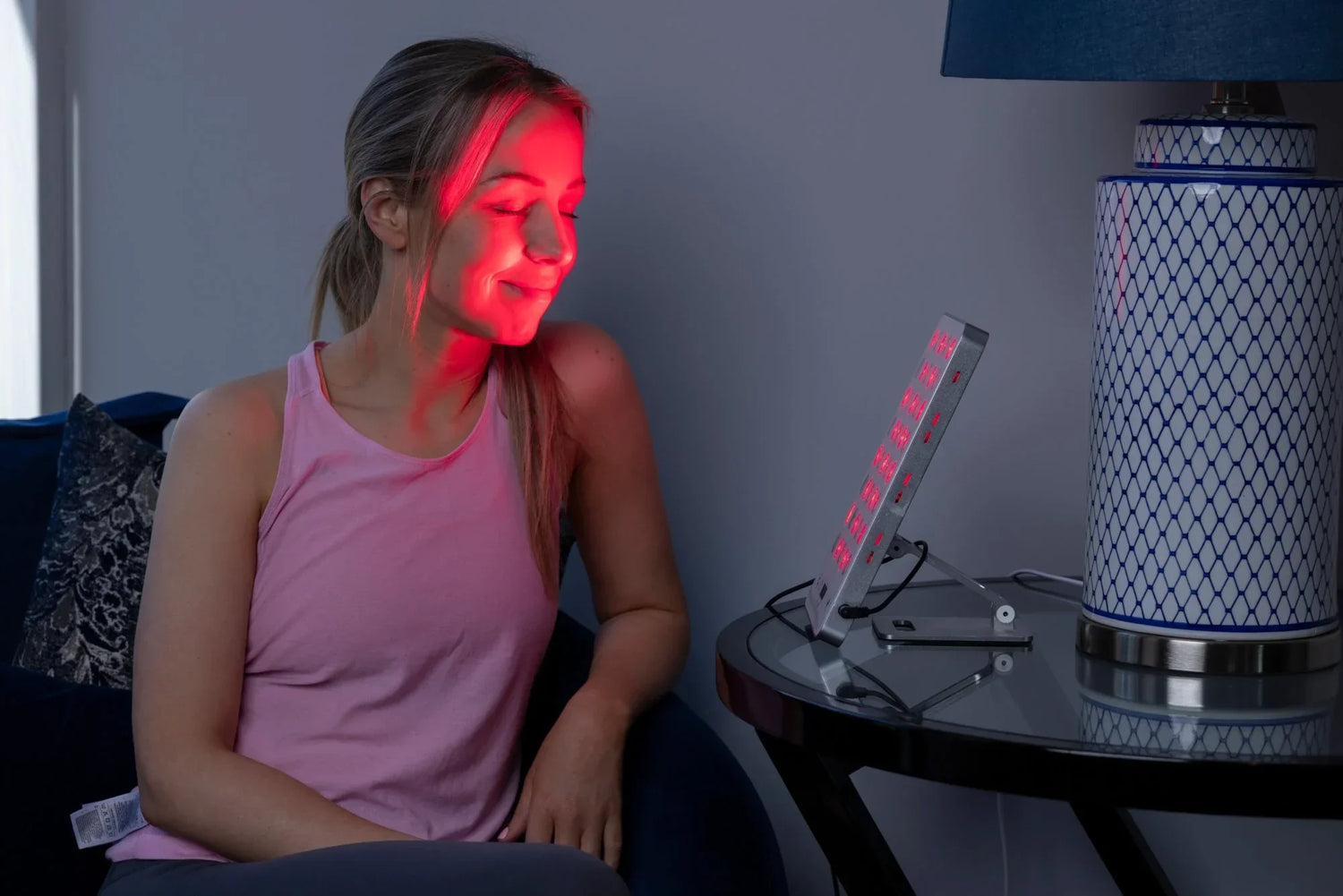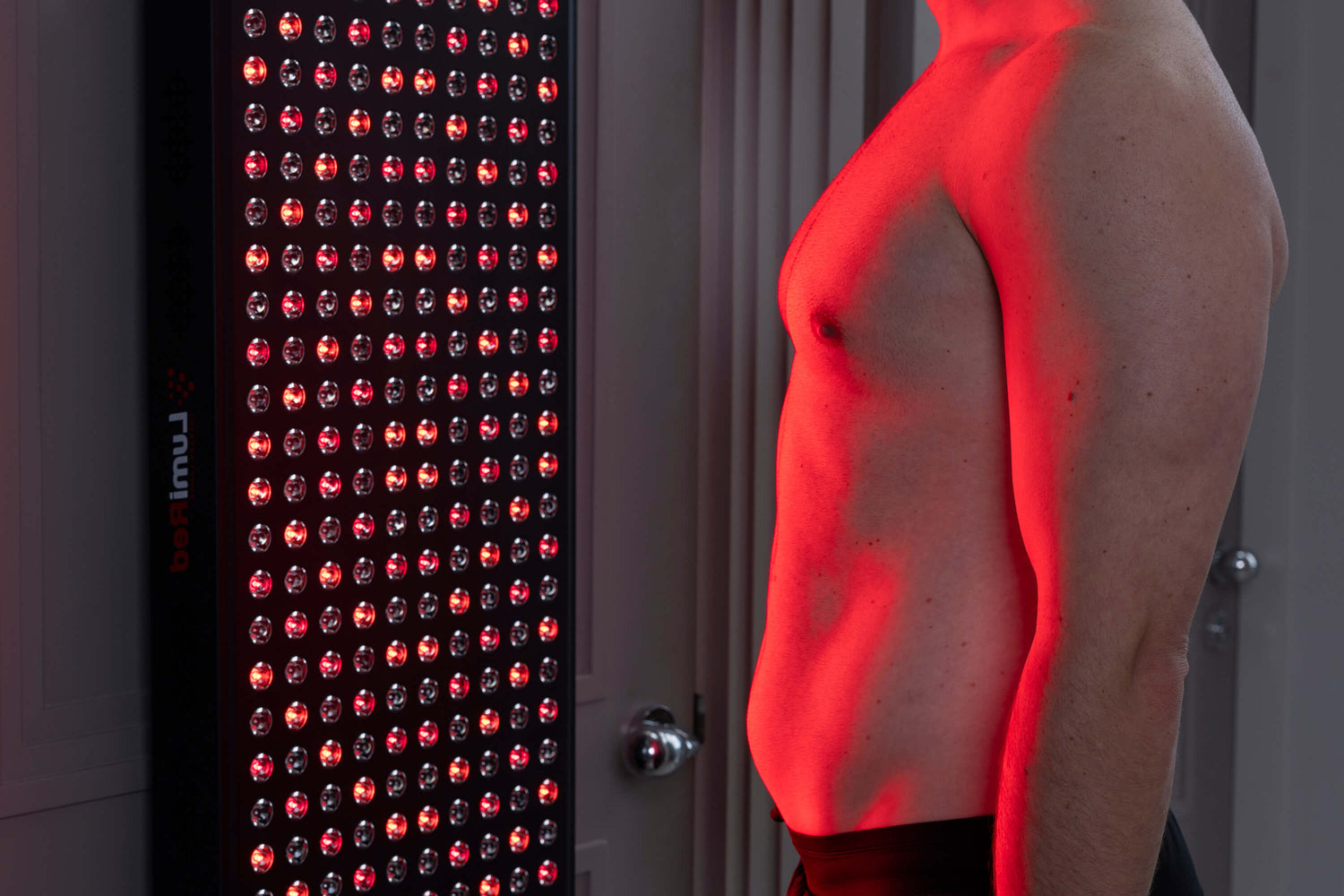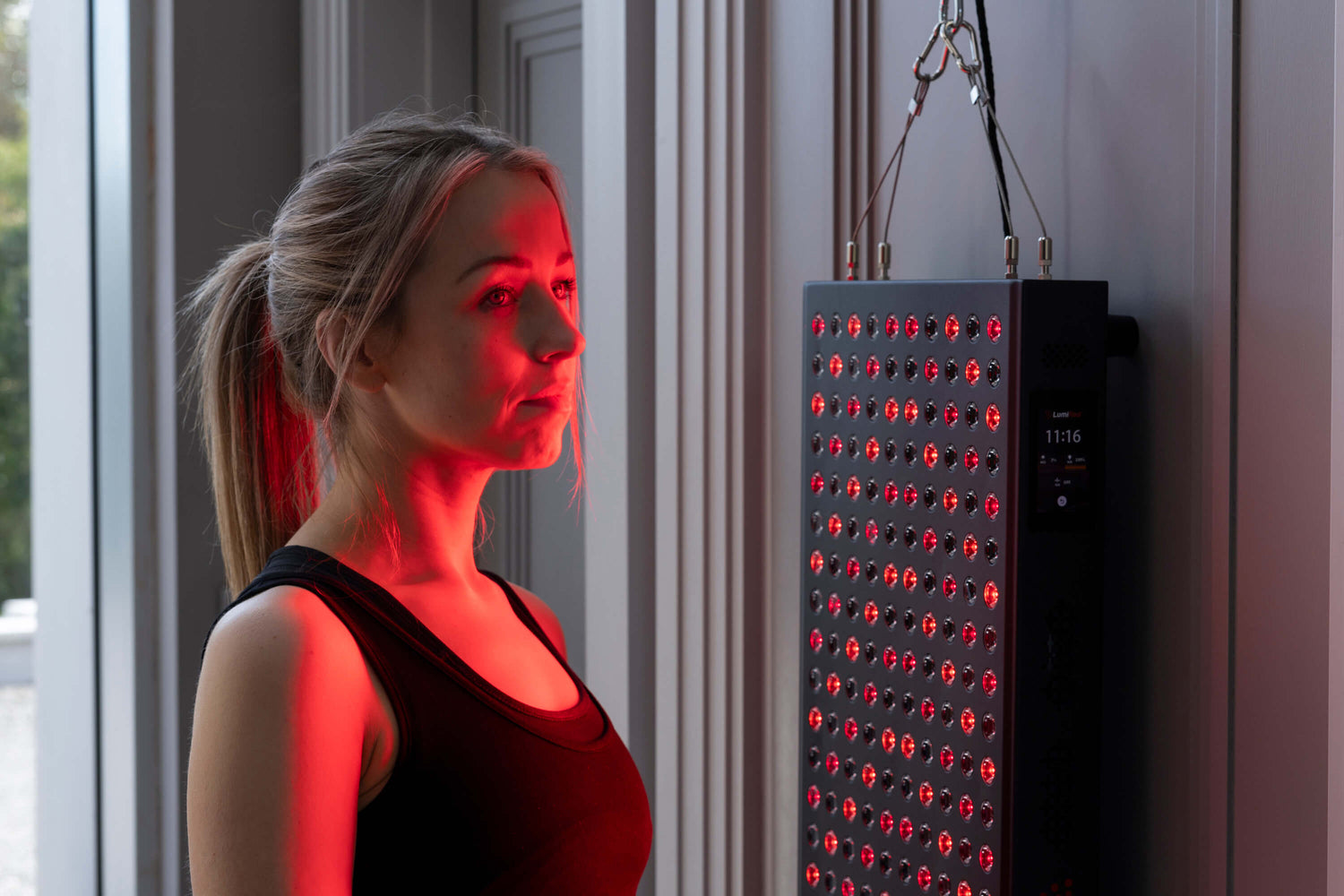In recent years, red light therapy has gained a lot of recognition for possible health benefits. But red light therapy is more than just a passing fad. So, what is red light therapy? It is a non-invasive technique that uses low-wavelength red light. This red light penetrates the skin to increase cellular activity. This therapy is being used for skin rejuvenation, pain relief, and decreasing inflammation.
Red light therapy is being used by more people to ease things like chronic inflammation, joint pain, and skin conditions in place of traditional therapies. This exciting technology is being embraced by individuals at red light therapy clinics and in homes.
Key Takeaways:
-
It is a natural, non-invasive way to treat and reduce chronic inflammation and pain.
-
Red light therapy is beneficial in many ways, improving cellular function circulation and reducing oxidative stress.
-
Chronic inflammation can manifest itself as persistent pain, ongoing fatigue, skin issues, and/or digestive problems.
-
Whether targeted in a clinical environment or full-body at home, red light therapy is simple to use.
The Advantages of Red Light Therapy
The following are some of the advantages of red light therapy:
-
Reduction in Inflammation: Red light therapy reduces oxidative stress and inflammation within the body.
-
Pain Relief: Whether it is red light therapy for pain or recovery from a workout, sufferers are able to reduce pain with light therapy.
-
Improved Skin Health: Common skin conditions, such as wrinkles, acne, and scarring, are some conditions for which people engage in light therapy.
-
Improved Circulation: The theory of red light therapy is improved blood flow, which is a more efficient way to get oxygen and nutrients where they are needed.
-
Joint Health: There is research that supports red light therapy use for arthritis and joint issues to help patients restore movement.
-
Faster Healing: Red light therapy exposure can promote fibroblasts, the cells that make collagen, which can be useful for wound healing and tissue regeneration.
What is Chronic Inflammation?
Inflammation is a normal part of the body's immune response in fighting infections, injuries, or toxins. Chronic inflammation may lead to severe health problems, such as Arthritis, cardiovascular illnesses, Diabetes, Autoimmune diseases and Neurodegenerative diseases.
Fatigue, joint pain, swelling, gastrointestinal dysfunction, and skin problems are some common signs of chronic inflammation. Proper control of inflammation is vital for overall health and long-term complications.
Symptoms of Chronic Inflammation
The following are the symptoms of red light therapy:
-
Pain or Stiffness Persisting: Chronic inflammation can create a persistent level of pain in extra joints and tissues.
-
Fatigue: Such a condition may also lead to extreme fatigue or lack of energy and dissatisfaction with sleep.
-
Skin Issues: Underlying inflammation may exacerbate deficiencies, causing redness, rashes, excess itchy skin, and other skin conditions such as eczema or psoriasis.
-
Gastrointestinal Problems: Chronic inflammation can result in gut issues such as bloating, recurrent acid reflux, irritable bowel syndrome (IBS) and other gut problems.
-
Brain Fog: Inflammation can impair cognitive ability and create difficulties with working memory, losing track of what you're doing, and other things related to cognitive impairment.
-
Frequent Infections: Ongoing inflammation can lead to a weak immune response and make you more vulnerable to colds, flu, and other illnesses.
What Causes Chronic Inflammation?
The following are the causes of red light therapy:
-
Poor Diet: Processed foods, high sugar intake, and unhealthy fats can trigger inflammation in the body.
-
Chronic Stress: High levels of stress hormones like cortisol can contribute to persistent inflammation.
-
Lack of Physical Activity: A sedentary lifestyle can slow circulation and worsen inflammatory responses.
-
Environmental Toxins: Pollution, chemicals, and allergens can irritate the immune system, leading to chronic inflammation.
-
Autoimmune Conditions: Disorders like rheumatoid arthritis, lupus, and multiple sclerosis cause the immune system to attack healthy tissues, leading to inflammation.
As the need for natural methods of chronic inflammation reduction grows, red light therapy is proving to be a tool with great power.
Leveraging Red Light Therapy for Chronic Inflammation
Red light therapy is the process of projecting specific wavelengths of light. The light penetrates the skin surface and even deeper tissues. This light energy enters the mitochondria (cells' power supplies), enhances regular cellular function, and assists the healing process. This is the way red light therapy reduces inflammation:
-
Decreases Oxidative Stress: Chronic inflammation is caused by an overload of oxidative stress due to an imbalance of free radicals and antioxidants. Red light therapy decreases oxidative stress by neutralising free radicals and thus decreasing cellular inflammation.
-
Increases Circulation: Increased blood flow can supply inflamed tissue with oxygen and nutrients to enhance healing.
-
Increases Tissue Repair: Light energy activates fibroblasts and supports the regeneration of new tissue and collagen.
-
Modulates Immune Response: Red light therapy helps balance the immune system, reducing excessive inflammatory responses.
-
Supports Joint and Muscle Health: Using infrared light therapy or full-body red light therapy can provide relief for arthritis, muscle soreness, and overall inflammation.

How to Use Red Light Therapy for Pain and Inflammation?
There are numerous ways to integrate red light therapy for pain and inflammation into your daily routine:
1. Red Light Therapy at Home
All thanks to technology, red light therapy is no longer clinic-bound. There are strength- and power-level red light panels, as well as home-use infrared lamps, available to you. All you need to do is place the device a few inches away from the affected area and expose it to red light for 10-20 minutes a day
2. Clinical Treatment
If you would like a session, many wellness centres will have red light therapy available. Usually, these will be more powerful for targeted relief.
3. Targeted Therapy for Joint Pain
A common question is how to use an infrared lamp for arthritis. Just place the light over the joints for a few minutes per day, repeating every few days to decrease pain and stiffness over the course of several weeks.
4. Whole Body Exposure
For systemic inflammation, full-body red light therapy is unrivalled. This will provide benefits that target inflammation in many areas all at once!
Finding the Right Red Light Therapy Device
When selecting a red light therapy device, look for the following:
-
Wavelengths: A device that emits wavelengths ranging between 600-850nm (nanometers) will offer optimal therapeutic gain.
-
Output Power: Ensure there is sufficient output power for the light to penetrate sufficiently into the tissues.
-
Treatment Area: Choose a device based on whether you want localised treatment or full-body treatment.
-
Safety Features: Be sure to verify that the device has FDA clearance or is backed by scientific research.
While researching red light therapy, it is wise to research treatment options near you online and wellness clinics that use the therapy in your area.
Conclusion
Red light therapy provides a new alternative to managing chronic inflammation, pain relief, and overall wellness. If you are suffering from arthritis, back pain, or skin health issues, this natural therapy may support your body’s natural healing ability, so consider it for pain relief.
With red light therapy panels and over-the-counter devices, you can develop an at-home routine. R ed light therapy for pain and inflammation continues to be groundbreaking, reducing oxidative stress and increasing blood circulation for cellular repair in conjunction with pain relief for many individuals. If you do find that red light therapy might be beneficial to you, think about adding it to your regime under the consultation of a doctor and selecting a suitable device depending on what your needs are.
Red Light Therapy with LumiRed
Discover the benefits of red light therapy with LumiRed! Our red light therapy devices help you alleviate chronic pain, inflammation, and fatigue, all from the comfort of your home. LumiRed devices are easy to use and provide clinical-grade results without the hassle of an office visit. Take charge of your health today with LumiRed.




